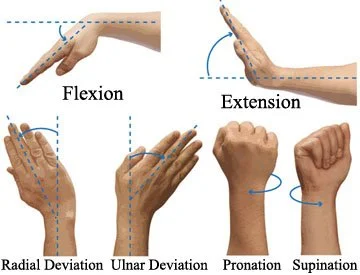How Hand Therapy Can Help Arthritis — Without Relying Only on Medication
I hear from so many people (clients and community members alike) who say some variation of: “There’s nothing to do for my hands if they’re arthritic, right? Because if you have it, you have it.”
The latter is true. If you develop arthritis in the joints of your hands or wrists, hand rehabilitation will not cure it. However, there are so many things you can do during painful flare ups to manage your arthritis and continue to live life to its fullest. In hand therapy, not one strategy or exercise will fit everyone’s lifestyle. In sessions, we’ll begin to learn what activities you do, which ones to prioritize, and which ones we can continue to do but with less energy, stress, and pain. Let’s talk about some strategies here.
Joint Protection Techniques
Activity modification is something necessary to prioritize the stresses that are put on your joints. Joints are made up of cartilage and ligamentous tissue, the cartilage acting as a cushion in between bones to withstand force. When you have arthritis (I’m talking mainly about osteoarthritis here), your cartilage has thinned out or basically there is less to none. If during the day with all the demands on the hands, if you can think of ways to decrease the load on the smaller joints, it will preserve its use for the important things you have to do in the day.
Examples of this might look like:
Holding a bag of groceries on your forearm or even in a larger bag over your shoulder. This will apply force to the larger joints on your upper arm rather than stressing your finger or wrist joints for a prolonged period of time.
When picking up or holding your laptop or a heavy book, holding it with hand flat underneath the surface rather than holding the sides with your fingers and thumb.
Using a pop socket on the back of your phone. This would decrease the repetitive stress on the fingers to hold your phone and distribute the force on parts of the hand that are not stressed normally throughout the day. Speaking of phone use, you could also alternate which fingers you use to scroll or type, which would give the thumb a rest and ease the pains that you might incur on the base of your thumb.
Adaptive Tools for Daily Life
This actually also fits into the realm of joint protection. By using adaptive tools for daily tasks, you offload the force on smaller joints and allow your joints a break from inflammatory activities.
Here are a couple go-to’s I may recommend:
A multi-sized jar opener uses a standard grip to open multiple jars or bottles. Instead of having to use a thumb heavy pinch or grip and relying on the distal joints of your fingers, you are able grip the handle with a neutral wrist and avoid side-to-side stresses also on your wrist.
Built up pen or pencil grips are a huge game changer for people who want to keep writing without the pain. Using a larger grip for activities (this can apply to using utensils as well) distributes the force along more joints, rather than having to grip a smaller sized object. Not one grip fits all, so I recommend considering a couple options and learning which grip tools are most comfortable for your lifestyle.
Key wings/key turners can turn (pun intended) your small and difficult keys into an easy to grip and lock or unlock your doors. You are basically lengthening the lever required to torque the key in the lock. The key wing gives you decreased force required to turn the lock, as well as a decreased stress on joints.
Gentle Mobility and Strength Exercises
The first step for arthritis in the hands and wrists (rather all joints that have an arthritic flare up) is to calm the inflammatory response. Before trying to move more with less pain, we have to decrease pain. Yes, motion is lotion, however, if you start moving in ways that are painful, it will beget pain. Heat modalities are a great way to lubricate the joints, calm the nerves, and soften the tissues around the area to start moving. Try a hot water soak for 10-15 minutes before moving in all planes of that particular joint. For example, for the wrist, after warming up the area, you might take the wrist into extension and flexion, deviation, and rotational exercises.
As you safely progress with being able to move more in a pain free range, then we can take you further to progress in protecting the joints with gentle and progressive strengthening.
Splinting to Reduce Pain and Deformity Progression
As osteoarthritis progresses, sometimes so does the malalignment of the joint, causing deforming postures of the hands. Some people ask if braces can put the joints back into place. Simply put, it cannot. But what splinting can do for you is rest the joint in its most neutral position, which would also help to calm the inflammatory flare up, reduce pain, and it could prevent further deformities. Splint wearing schedules vary, but nighttime is a great time to wear these braces (custom or prefabricated), as well as during your most stress-producing activities (ie. wearing a thumb brace that works for you during gardening or chopping).
Check out my custom splinting service to see what custom bracing looks like or how it might help you. Or if you’d like a free mobility screening for your hand, fill out a form and we’ll get you booked!





